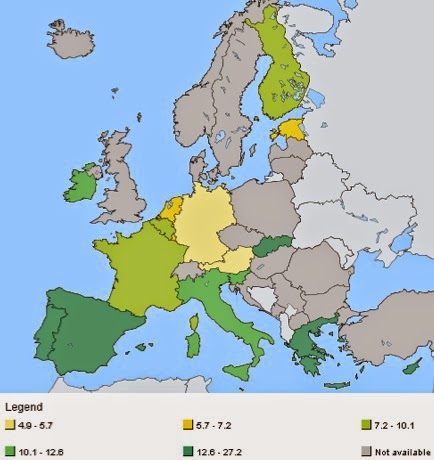Sometimes, decisions that shape the world’s economic future are made with great pomp and gain widespread attention. Other times, they are made through a quick, unanimous vote by members of the New Zealand Parliament who were eager to get home for Christmas.That is what happened 25 years ago this Sunday, when New Zealand became the first country to set a formal target for how much prices should rise each year — zero to 2 percent in its initial action. The practice was so successful in making the high inflation of the 1970s and ’80s a thing of the past that all of the world’s most advanced nations have emulated it in one form or another. A 2 percent inflation target is now the norm across much of the world, having become virtually an economic religion.
Irwin goes on to provide a nice description of how and why New Zealand adopted this policy. Although it initially seemed quite successful in achieving the goal of avoiding a repeat of the high inflation if the 1970s (which continued well into the 80s in some countries) while maintaining reasonable growth rates, it has been tested by the experience of the past seven years. One question is whether the level of 2 percent is the right one. Irwin describes how Janet Yellen successfully argued against those at the Fed who wanted to go for zero inflation in the mid-1990s, but even 2 percent may be too low:
Starting in the late 1990s, Japan found itself stuck in a pattern of falling prices, or deflation, even after it cut interest rates all the way to zero. The United States suffered a mild recession in 2001, and the Fed cut interest rates to 1 percent to help spur a recovery. Then came the global financial crisis of 2007 to 2009, spurring a steep downturn across the planet and causing central banks to slash interest rates.All of this has quite a few smart economists wondering whether the central bankers got the target number wrong. If they had set it a bit higher, perhaps at 3 or 4 percent, they might have been better able to combat the Great Recession because they could cut inflation-adjusted interest rates by more.
The apparent initial success as well the reasons for recent doubts can be seen in the UK's experience, which adopted inflation targeting in 1998:
(the chart data is from the OECD, via FRED. The UK's target was initially 2.5%, but expressed in terms of a different price index measure, when it switched to using the CPI, it moved the target to 2% based on differences in the measures.)
While the UK generally has had low and (relatively) stable inflation since the early 1990s, it did miss its target considerably in 2007-2012, and it may be in danger of undershooting its target (as the Fed is) - inflation in November was 1% (this is not evident in the chart because it plots the percentage change in the price index from the year before).
Although I think the Bank of England deserves credit for not tightening in the face of inflation which ultimately proved transitory, this does call the inflation targeting framework into question. Arguably, it may have helped keep inflation expectations "anchored" even as inflation deviated from target. However, at some point, one would expect such deviations to undermine the credibility of the regime, and it was the idea of establishing credibility that made it attractive to academic economists in the first place (the underlying intuition for this was nicely described in this speech by Philadelphia Fed President Charles Plosser).
The other question, of whether a higher target, or a different one - such as a target price level (inflation is the rate of change of the price level) or nominal GDP - would be better is an interesting and important one. The difficulty now is that, having established a monetary policy rule, the credibility of any new rule could be diminished by a change in rules.
























